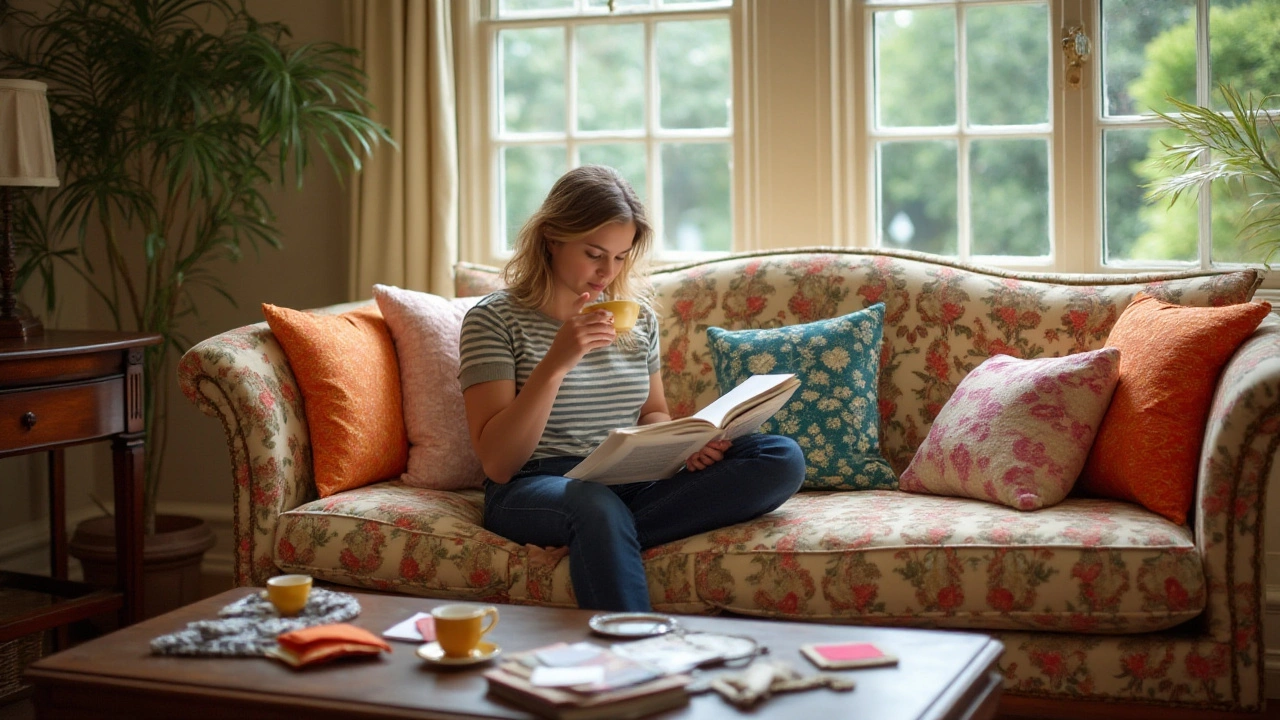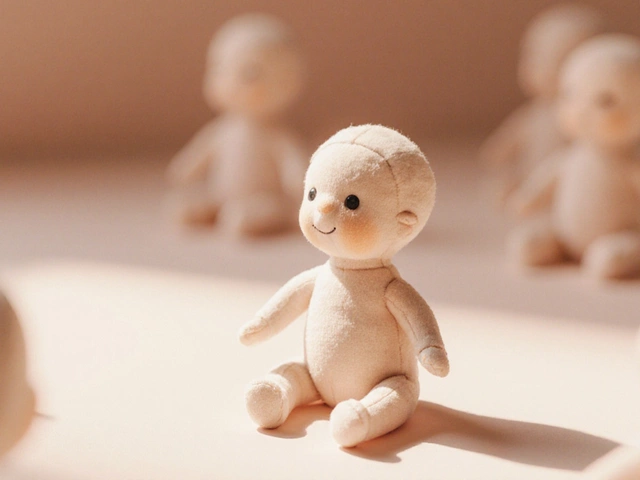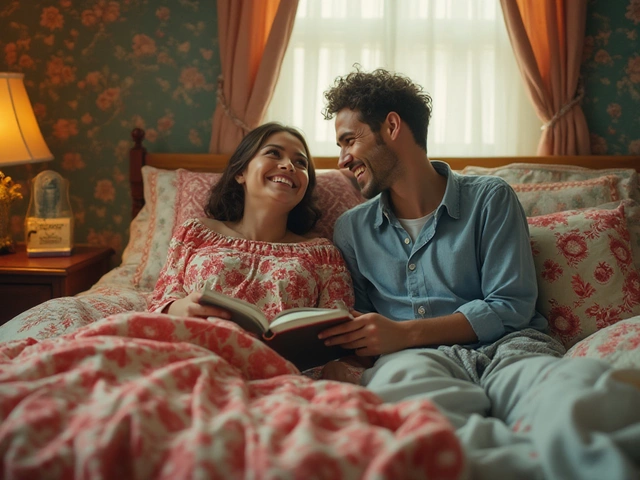Have you ever found yourself sinking into your couch and wondered if there's a way to revive it without the hefty price tag of a new purchase? Replacing just the cushions might be your answer, and it's a solution that many overlook. It’s remarkable how much new cushions can breathe fresh life into furniture, making it feel comfortable and stylish again.
From selecting the perfect fabric that matches your current décor to ensuring the cushion fillings give you just the right amount of support, there’s more to consider than meets the eye. Whether your couch has served you many years or you're simply looking for a fresh update, knowing the right steps and options available will set you on the right path. Read on as we explore essential tips and ideas to guide you through replacing those weary cushions.
- Why Consider Replacing Only the Cushions?
- Types of Cushion Materials
- Matching Cushion Sizes and Styles
- Choosing the Right Fabric
- DIY vs Professional Replacement
- Cost Considerations and Tips
Why Consider Replacing Only the Cushions?
Let's be honest, a couch is often the centerpiece of any living room, an essential on which families gather to laugh, lounge, and sometimes even sleep. Over time, however, the firmness might fade, or the colors might no longer blend with your decorative taste. You may end up with something that’s neither comfortable nor attractive. This is where the concept of replacing couch cushions comes into play. It’s not just about restoring aesthetics; it’s about making sure every sit feels just right again without the financial commitment of a new sofa.
An interesting fact many don't realize is that you can save a significant amount of money by opting for a cushion upgrade instead of a complete furniture makeover. Couches aren’t cheap investments, and even more extravagant ones can see a new lease of life through strategic revamping of their soft components. Most couches feature cushions that are detachable for this very convenience, proving that manufacturers themselves anticipate this form of renovation.
Economically speaking, let's look at some numbers. Replacing an entire couch might cost you anywhere from a few hundred dollars to a couple thousand depending on your style and brand choice. On the other hand, replacing the cushions can be a fraction of that cost. By choosing to switch out only the sofa cushions, you not only rescue your beloved couch but can also invest the savings in other home decor upgrades, or perhaps the holiday you’ve been dreaming off.
According to an interior design analyst from Home Comfort News, "Refreshing your cushions is one of the easiest ways to breathe new life into a room, and it's much less wasteful than disposing of an entire piece."
Moreover, the environmental benefits cannot be overstated. By opting to replace rather than discard your entire piece, you contribute to reduced waste and less environmental strain. In a world striving for sustainability, small actions like these collectively make a huge difference. This choice means you use what you have differently, promoting the longevity of existing materials.
There's also a unique opportunity for customisation. When replacing just cushions, you have a whole world of fabrics and fills to choose from, allowing you to tailor your couch to personal taste and comfort preferences without being held captive by the original manufacturer's design decisions. From plush velvets to sturdy cottons, and whether down-filled or foam-supported, each option affects your comfort and room's design in beautiful ways. So actually, you're not just fixing an old problem, you're opening the door to personal expression.
Let’s not forget the emotional connection many develop with their furniture. Memories, family events, or just the cozy simplicity of knowing your spot are wrapped in emotional ties that often make discarding them undesirable. By choosing to replace only the cushions, you preserve these memories and the character of your room, while still enjoying a rejuvenated comfort. All these factors combined make the decision to consider cushion replacement not just logical, but deeply satisfying.
Types of Cushion Materials
When you're thinking about replacing your couch cushions, understanding the various types of cushion materials available is a crucial step. Cushions aren't just about aesthetics; they play a significant role in the comfort and longevity of your seating. The material you choose can impact how firm or soft your couch feels, how it holds up over time, and even how easy it is to maintain. Let's explore some of the most common materials you might consider.
One popular option is foam. Foam cushions come in various densities, making them versatile for those seeking different levels of support and comfort. High-density foam provides firm support and maintains its shape well, which makes it ideal if you prefer a couch that doesn’t sag over time. Meanwhile, low-density foam offers a plush, softer feel but may require more frequent replacement. Foam cushions are often wrapped in a Dacron layer, a polyester fabric that adds an extra layer of softness and gives cushions a fuller look. As noted by Leonardo Michaels, a furnishing expert,
"When selecting foam for cushions, density and resilience are key factors that determine both comfort and durability."
Another material frequently used is down or feather, known for its luxurious soft feel. These cushions are often chosen for their plushness; however, they do require regular fluffing to retain their shape. A down cushion typically contains a blend of down and feathers, providing a cozy and inviting sitting experience that many people love. They’re perfect for creating a casual, lived-in look in your living room, though they might not be the best choice for those seeking firm support. On the other hand, while down is softer, it may not provide the same level of support as foam, and some people are allergic to it, which is a crucial consideration when selecting materials.
Polyester fiberfill is another budget-friendly choice that delivers good softness and flexibility. These cushions are lightweight and maintain their shape relatively well with regular care. Although they might not offer the same longevity as foam or down, they’re an excellent choice if you're looking for economical options that provide versatile comfort. Additionally, polyester fiberfill has hypoallergenic properties, appealing to those with sensitivities and contributing to a healthier indoor environment. Another attractive feature of polyester cushions is that they dry quickly, which can be a lifesaver if spills are a concern in your household.
In some cases, a combination of materials is used to harness the benefits of each type. For example, some cushions incorporate a foam core wrapped in a down layer, aiming to offer the structural integrity of foam with the soft touch of down. This hybrid approach offers comfort and support, ensuring you don’t have to compromise on your seating experience. Consider factors such as comfort preference, budget, and maintenance when selecting cushion materials so that your choice will keep you lounging contentedly for years to come. As you delve into the world of couch cushions, noting these materials and their unique properties will equip you to make an informed decision that aligns with your style and needs.
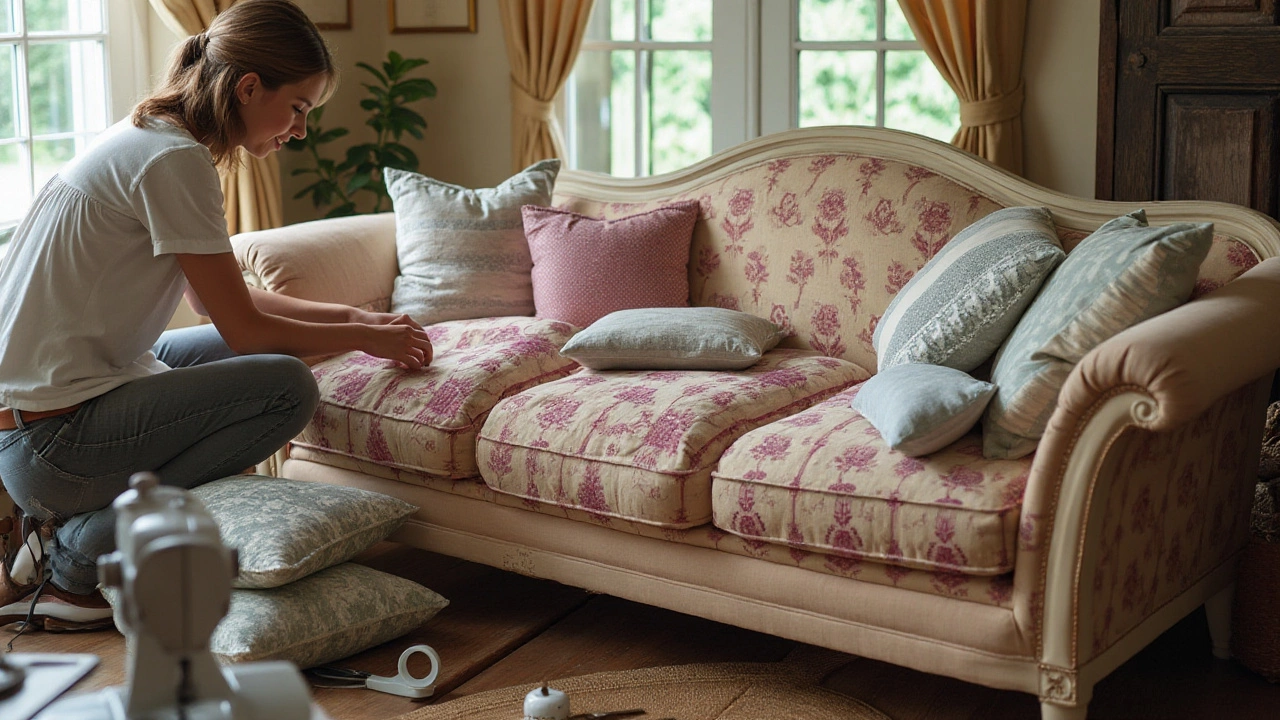
Matching Cushion Sizes and Styles
When it comes to couch cushions, size matters more than you might think. A perfectly sized cushion not only complements the frame but also adds to the overall comfort and appearance of your furniture. Before dashing out for replacements, measure the existing cushions precisely. Always use a measuring tape to capture length, width, and thickness. It's surprisingly easy to misjudge these dimensions, leading to ill-fitting cushions that don’t quite cover or align with the seating area. Getting this right ensures that the new cushions won't slide awkwardly or look out of place.
Besides sizing, another crucial aspect is style. Sofas can come in numerous designs, from traditional to modern, each carrying its distinct charm. Finding cushions that sync with the style of your couch is important for achieving aesthetic harmony. Whether your couch has a classic tuxedo silhouette or a contemporary sectional design, choosing styles that blend rather than clash will enhance your living space. While some might think achieving a cohesive look is challenging, it often just takes a little attention to detail. Consult design magazines or online style guides to draw inspiration that fits your personal taste and the existing decor.
Material choice also plays a vital role in blending sizes and styles. For example, a plush velvet might add elegance to a vintage settee, whereas a sleek leather cushion could modernize a minimalist frame. Finding balance is key. Consider the room's atmosphere and the couch's wardrobe before making a decision. According to renowned interior designer Pippa Jameson,
"the harmony between cushion and couch should reflect not just style but the lifestyle of those who use it."This highlights the importance of knowing your taste and living needs before choosing the right cushions.
Consulting with professional upholsterers can also provide insights into the right cushion choice for your sofa. They often have extensive catalogs of shapes and dimensions that can fit unusual designs. Those with standard sofa models might find it easier, as many retailers offer a variety of cushion sizes tailored to common couch frames. Ensure your measurements are precise—it's wise to over-calculate just a bit on thickness as cushions tend to flatten over time and use.
Finally, the process of selecting and fitting new cushions can spark creativity, allowing you to tweak and elevate your living space. By focusing on the compatibility of size and style, you prevent common pitfalls like an uncomfortable lounge area or mismatched decor. Remember, a well-fitted cushion replacement is a critical step in maintaining not only the function but extending the lifespan of your couch. A great seating piece, at its core, needs equally great accessories to shine at its best.
Choosing the Right Fabric
When it comes to replacing your couch cushions, selecting the right fabric is perhaps one of the most exciting yet challenging aspects. The decision largely hinges on personal preferences and practical needs, but it doesn't hurt to let a bit of creativity fly, too. The upholstery options are vast, ranging from materials like velvet and linen to more durable and stain-resistant selections. Each fabric brings a different feel and texture to the sofa, so it's worth giving this choice significant thought. For those with children or pets, choosing a fabric that is both durable and easy to clean is crucial. This only heightens the importance of careful consideration.
Velvet, for example, is revered for its opulent feel and plush texture, making it a luxurious addition to any living room. However, it may not fare well with daily wear and tear if the couch serves as a high-traffic area of your home. Linen, on the other hand, offers a breathable and casual aesthetic, which is perfect for a more laid-back ambiance. The disadvantage? Linen tends to wrinkle easily, which can be a downside for those who prefer a more polished look in their living spaces. Balancing aesthetics with practicality should always be part of your fabric decision-making process.
Another key aspect to consider is color and pattern. A well-chosen hue or design can transform the entire room, making it more vibrant or, conversely, more serene. It's important to align your choice with the existing décor while reflecting your personal style. Solids are a safe bet, but don't shy away from patterns if they resonate with your style. Patterns can mask wear and stains better, which is a significant advantage as the years go by. A neutral palette ensures versatility, but a pop of color here and there can add personality and charm. Mixing and matching fabrics within a space can add visual interest, so think about different textures between cushions and other furniture items.
“The choice of fabric sets the tone for comfort and longevity,” says Aaron Stewart, a renowned interior designer featured in Architectural Digest.
"It’s not just about looking good—it’s about feeling at home."Take a moment to test how each fabric feels against your skin before making your choice. Samples can be ordered to get a tactile feel and help envision how they’ll hold up under real-life conditions. Texture and comfort should never be overlooked in favor of aesthetics alone.
For those keen on sustainable living, eco-friendly fabric options are becoming increasingly popular. These materials are crafted from recycled fibers or natural, renewable sources. When paired with cushions made from eco-friendly fillings, they present a perfect option for the environmentally-conscious homeowner. Sustainable choices often carry higher upfront costs, but they offer peace of mind that you’re contributing positively to the world.
| Fabric Type | Durability | Care Needs |
|---|---|---|
| Velvet | Medium | Professional Cleaning Recommended |
| Linen | High | Machine Washable, Check for Wrinkles |
| Cotton | Varies | Spot Clean or Machine Washable |
| Leather | Very High | Condition Regularly |
It’s truly exciting to consider all these elements when choosing new coverings for your couch cushions. The fabric you select will likely accompany you for years, making it worthwhile to ensure it aligns with your lifestyle and aesthetic aspirations. Take your time, do some homework, and even seek a second opinion if you want. This way, your decision will undoubtedly lead to a refreshed living space that’s both beautiful and functional.
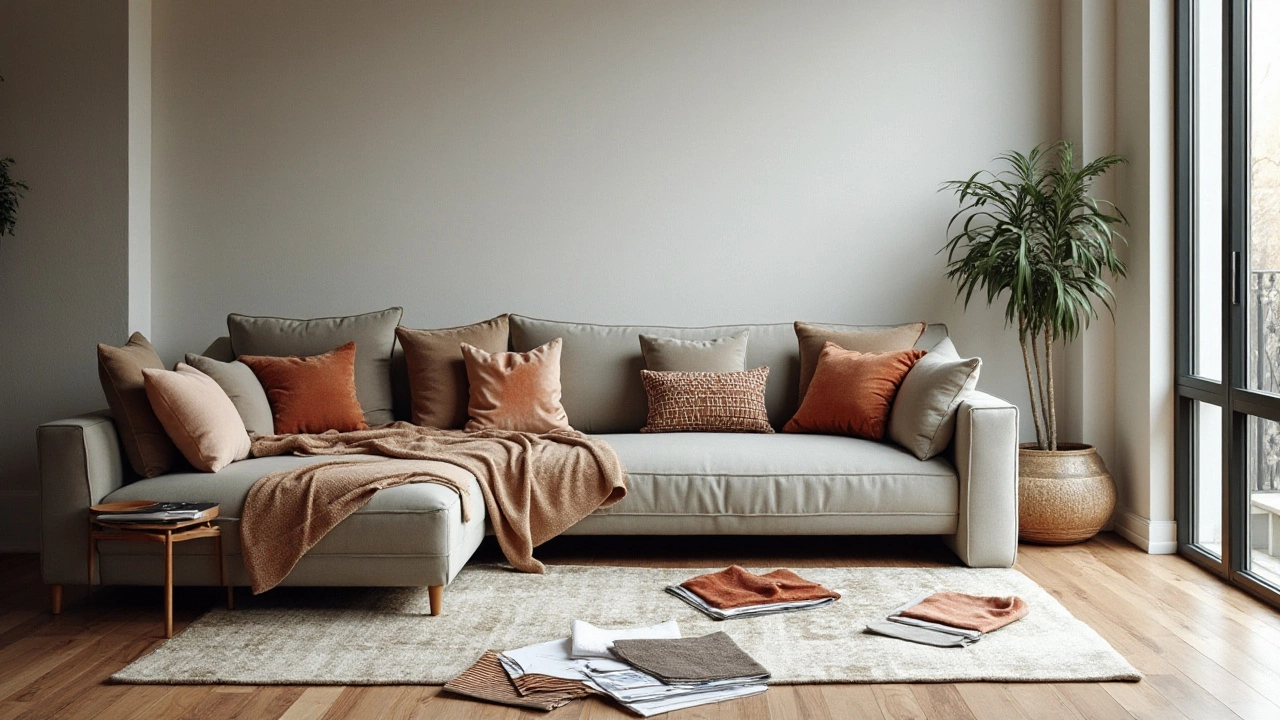
DIY vs Professional Replacement
Choosing between a DIY approach and hiring a professional to replace your couch cushions largely depends on your personal preferences, budget, and the level of customization you desire. There are advantages and challenges to both options that require careful consideration. When taking the DIY route, you have the creative freedom to select every material and design element yourself. This can be both empowering and overwhelming. Imagine strolling through your local fabric store, surrounded by endless rolls of colors and textures, each promising to transform your living space into something uniquely yours. However, taking on a project like this requires some skill, patience, and the appropriate tools. You might need a sturdy sewing machine to handle thick upholstery fabric, and a set of steely nerves when that fabric doesn't lay flat on your first attempt or the stitches gather awkwardly.
On the flip side, hiring a professional offers a different kind of relief. Placing your beloved sofa in the hands of an expert means you'll likely get a polished finish that might be challenging to achieve on your own. Professionals bring years of experience and expertise to the table, often delivering results that seamlessly fit into even the most complex home design themes. They understand the nuances of fabric stretches, cushion blends, and the magic of achieving that plush feel without compromising longevity. Yet, this expertise comes with a cost. The professional route might be pricier upfront, but some find it a worthy investment for peace of mind and assurance of quality. A good example is from a well-respected interior designer who once remarked, "A professionally done piece not only emulates quality but assures durability and elegance, satisfying clients for years on end."
When it comes to making your decision, consider the type of fabric and filling you want for your new cushions. Some materials are notoriously tricky to work with and can test even seasoned upholsterers. Fabrics like velvet or thick, intricate patterns might sound and look beautiful, but they're less forgiving when mistakes occur. Also, consider if you want to keep the original silhouette and style of your couch or if you're aiming for a complete transformation, as some DIY kits and professional services may be limited in their ability to change the structure of existing cushion covers.
For those considering the DIY path, research is your best friend. Numerous online resources, from video tutorials to community forums, can offer insights and troubleshoot any issues that arise. Gathering a community of beginners or enthusiasts who are undertaking similar projects can provide not only moral support but practical advice that can save time and effort. A simple evening spent browsing blogs and tutorials can arm you with a toolkit of tips and tricks, making the DIY journey less daunting.
Ultimately, deciding whether to take on a cushion replacement project yourself or to seek out a professional's touch hinges on your comfort with risk, your budget, and your timeline. If you relish the idea of a weekend spent tinkering and learning, DIY could be immensely satisfying. On the other hand, if precision and professional-grade outcomes are non-negotiable for you, bringing in the experts will likely be the better course. Whichever path you choose, replacing your couch cushions is an opportunity for renewal, offering new comfort and style to your cherished space. If you take the time to weigh your options and plan accordingly, either choice can result in cozy, refreshed furniture that's a delight to come home to.
Cost Considerations and Tips
Embarking on the journey of replacing couch cushions can be a delightful project, but ensuring it doesn’t break the bank requires some savvy approaches. One of the first factors to consider is the cost of materials. Cushion replacements need durable fabrics, which might make you weigh the decision between synthetic blends or natural materials. Synthetic fabrics, while often cheaper, may not breathe as well as cotton or linen, which could be pricier but offer a more comfortable feel. A high-quality fabric can range anywhere from $10 to $100 per yard, depending on its design, weight, and brand.
Another aspect to factor in is the cushion filling itself. Common choices include foam, feathers, or a mix of both. Foam is versatile with options like memory or high-resilience foam, which offer varying support levels. If luxury is what you seek, consider feather fillings, although they may require more frequent upkeep to maintain their fluff. Memory foam options might set you back $30 to $50 per cushion, while feather and down mixes might cost a bit more. Additionally, if your current cushion covers are reusable and only need new fillings, this could be a budget-friendly partial solution.
Don’t forget the labor costs if you're banking on professional help. Local upholstery shops could charge various rates based on your design complexity, material choice, and exact requirements. When deciding whether to DIY or hire a pro, compare the costs carefully. DIY might save some money, but be honest about your skill level, as mistakes could lead to extra expenses. Consider this interesting note: according to Thomas Ridley of Better Homes, "Investing wisely in upholstery work could save you up to 50% in comparison to buying a new couch." This insight emphasizes that thoughtful spending can extend your sofa's life significantly.
Let’s discuss potential hidden costs. Delivery fees for large rolls of fabric or bulk material purchases can add up, so it’s wise to look for local suppliers or shops offering free delivery. Additionally, if DIY is your plan, tools required for the job, such as staple guns or sewing machines, might increase your budget. However, remember that many of these tools remain useful for future projects. It's essential to keep these little extras in mind when crafting your budget plan.
When navigating through price tags and decisions, timing can also play a critical role. Watch for sales and discounts, especially as home décor trends change with seasons. This could be the perfect moment to snatch that premium fabric you've been eyeing. Finally, weigh your peace of mind against the expenditure. In smart homemaking, sometimes spending a bit upfront can ensure years of joy in a strengthened sofa repair, proving its worth as a long-term investment.

